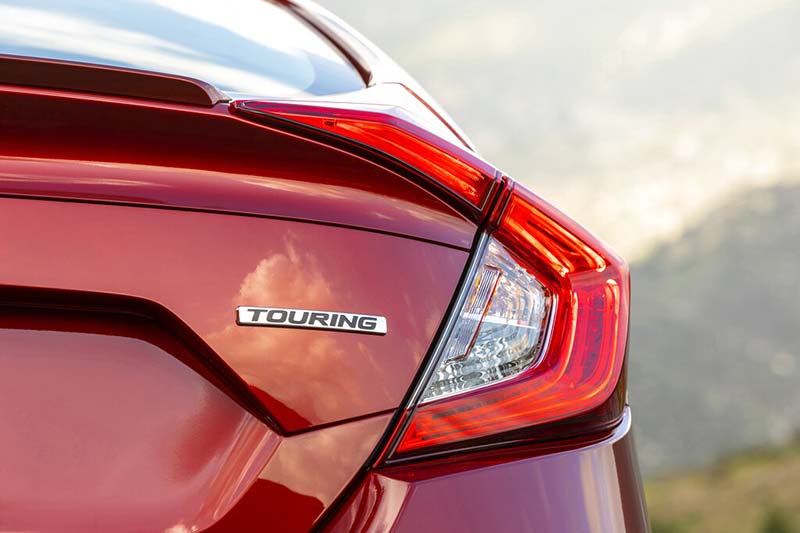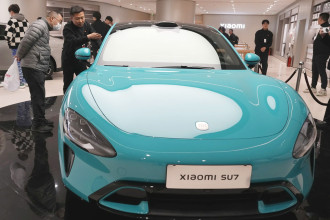
A key part of the car buying process is familiarising yourself with some of the key terms you will encounter on automaker websites or on the dealership lot. You want to ensure that you are getting the right features in your new vehicle. But if you are new to buying cars or are not familiar with auto industry lingo, a conversation with the salesperson can go right over your head.
With this in mind, here are the basics about trim levels, styles, options, packages and accessories. These are organised in the order you are likely to come across them when searching for a vehicle or configuring one online.
Make and model Let's start with the basics of a car's identity. "Makes" are the companies that make the cars: Kia, Ford or Subaru, for example. "Models" are the cars the automaker sells: Telluride, Explorer or Crosstrek. Some carmakers, including Genesis, BMW and Lexus, use alphanumeric names, such as GV70, X3 or IS 350.
Trim levels and body Styles Trim levels further identify a vehicle by a particular set of special features. Higher trim levels either add to the features of the entry-level model (often called the "base" model) or replace them with something else. Trim levels are where you will come across terms such as SE, Limited, Sport and Grand Touring, among countless others. You might also encounter the word "style." Some people use style and trim level interchangeably, but in general, a "style" usually indicates whether the vehicle is a sedan, pickup truck or SUV, and also what type of engine and drive system comes standard. It is possible to have two cars that have the same model and trim level but a different style. For example, the Toyota Corolla in SE trim can be had in one of two body styles: sedan or hatchback. Though it might seem overwhelming to keep track of trim information, the good news is automakers typically apply a consistent hierarchy of trim levels to their vehicles. In every car Honda makes, for example, an EX will always be a higher trim than an LX. With Ford vehicles, the SEL trim level will always be higher than the S.
Options Options are features that don't come as standard equipment with the vehicle. These items can range from a sunroof to a better sound system to a larger engine. Sometimes even colour can be an option, in that it costs extra to apply that specific shade of paint. Most options are installed at the factory. Others are "port-installed options," meaning they are added to the vehicle before it is shipped to the dealership. Some automakers such as Honda and Acura consolidate options into the trim levels. In most cases, once the customer has chosen a model, the only things that person has to decide are the trim level, colour and drivetrain. Other carmakers, such as Mini and Porsche, encourage their customers to personalise their vehicles with everything from seats upholstered in different colours of leather to colourful graphic decals for the bodywork. Though an automaker might offer a wide and possibly confusing array of options, this doesn't mean every vehicle on a dealer's lot will have those options. Dealerships often order a selection of vehicles from the manufacturer based on what will help the cars sell more quickly, not necessarily what will give customers a wide choice of optional equipment. If you're set on a specific combination of options, you can custom order the vehicle — provided you are willing to wait eight to 12 weeks for delivery.
Packages Packages are groups of options that have been bundled together with a common theme. For example, a technology package might include such options as a larger touchscreen, navigation, upgraded headlights and adaptive cruise control. A cold weather package might have heated seats, headlight washers and all-weather floor mats. Some automakers may give their packages a vague name, such as "Convenience" or "Popular Equipment Group." In such cases, you'll want to check the automaker's website for more information.
Dealer-installed accessories Accessories are parts that dealerships sell and install. These items can be anything ranging from a cargo net to larger wheels to performance parts. Some are made by the manufacturer; others are products sold by the dealership. Items sold by the dealership are often things such as tinted windows, fabric protection or an antitheft device. These dealer-installed accessories can potentially add thousands to the cost of the car and are itemised on something called a supplemental window sticker. Make sure to ask about these when inquiring about a vehicle in stock. Edmunds says, "Once you speak the language of make and model, trim and options, you'll be better able to find the car that's right for you and less likely to wind up with a fully loaded model that blows your budget."
Make and model Let's start with the basics of a car's identity. "Makes" are the companies that make the cars: Kia, Ford or Subaru, for example. "Models" are the cars the automaker sells: Telluride, Explorer or Crosstrek. Some carmakers, including Genesis, BMW and Lexus, use alphanumeric names, such as GV70, X3 or IS 350.
Trim levels and body Styles Trim levels further identify a vehicle by a particular set of special features. Higher trim levels either add to the features of the entry-level model (often called the "base" model) or replace them with something else. Trim levels are where you will come across terms such as SE, Limited, Sport and Grand Touring, among countless others. You might also encounter the word "style." Some people use style and trim level interchangeably, but in general, a "style" usually indicates whether the vehicle is a sedan, pickup truck or SUV, and also what type of engine and drive system comes standard. It is possible to have two cars that have the same model and trim level but a different style. For example, the Toyota Corolla in SE trim can be had in one of two body styles: sedan or hatchback. Though it might seem overwhelming to keep track of trim information, the good news is automakers typically apply a consistent hierarchy of trim levels to their vehicles. In every car Honda makes, for example, an EX will always be a higher trim than an LX. With Ford vehicles, the SEL trim level will always be higher than the S.
Options Options are features that don't come as standard equipment with the vehicle. These items can range from a sunroof to a better sound system to a larger engine. Sometimes even colour can be an option, in that it costs extra to apply that specific shade of paint. Most options are installed at the factory. Others are "port-installed options," meaning they are added to the vehicle before it is shipped to the dealership. Some automakers such as Honda and Acura consolidate options into the trim levels. In most cases, once the customer has chosen a model, the only things that person has to decide are the trim level, colour and drivetrain. Other carmakers, such as Mini and Porsche, encourage their customers to personalise their vehicles with everything from seats upholstered in different colours of leather to colourful graphic decals for the bodywork. Though an automaker might offer a wide and possibly confusing array of options, this doesn't mean every vehicle on a dealer's lot will have those options. Dealerships often order a selection of vehicles from the manufacturer based on what will help the cars sell more quickly, not necessarily what will give customers a wide choice of optional equipment. If you're set on a specific combination of options, you can custom order the vehicle — provided you are willing to wait eight to 12 weeks for delivery.
Packages Packages are groups of options that have been bundled together with a common theme. For example, a technology package might include such options as a larger touchscreen, navigation, upgraded headlights and adaptive cruise control. A cold weather package might have heated seats, headlight washers and all-weather floor mats. Some automakers may give their packages a vague name, such as "Convenience" or "Popular Equipment Group." In such cases, you'll want to check the automaker's website for more information.
Dealer-installed accessories Accessories are parts that dealerships sell and install. These items can be anything ranging from a cargo net to larger wheels to performance parts. Some are made by the manufacturer; others are products sold by the dealership. Items sold by the dealership are often things such as tinted windows, fabric protection or an antitheft device. These dealer-installed accessories can potentially add thousands to the cost of the car and are itemised on something called a supplemental window sticker. Make sure to ask about these when inquiring about a vehicle in stock. Edmunds says, "Once you speak the language of make and model, trim and options, you'll be better able to find the car that's right for you and less likely to wind up with a fully loaded model that blows your budget."
By RSS/AP
READ ALSO:- Edmunds Top Rated Awards for vehicles announced for 2022
- A-SUV model Toyota Raize launched in Nepal; pricing starts at Rs 6.6m
- Most awaited MG Hector officially launched in Nepal; pricing starts at Rs 59.99 lakh
- New Honda MMC Amaze 2021 launched in Nepal
- Chery Tiggo4 Pro SUV launched in Nepal
- All-new Hyundai Tucson launched in Nepal
Published Date: December 30, 2021, 12:00 am
Post Comment
E-Magazine
RELATED International





